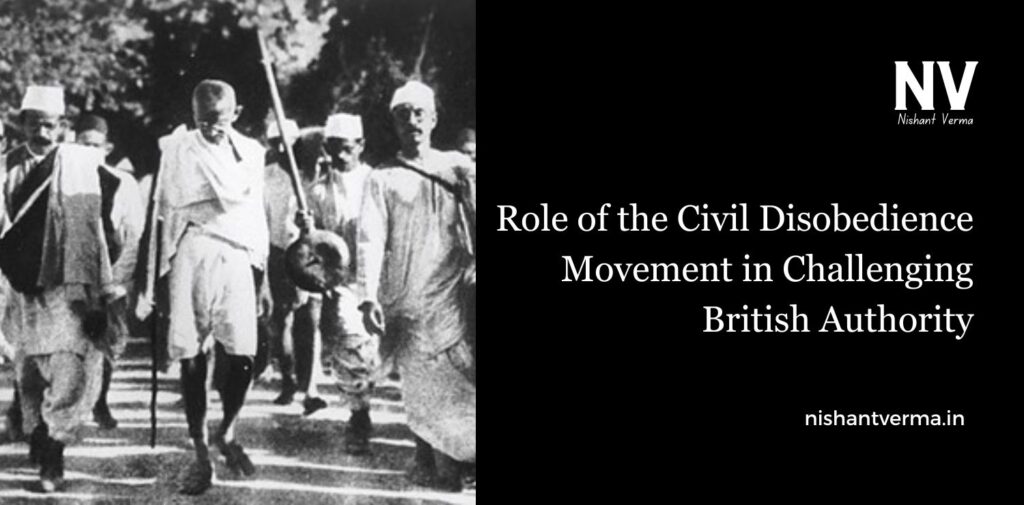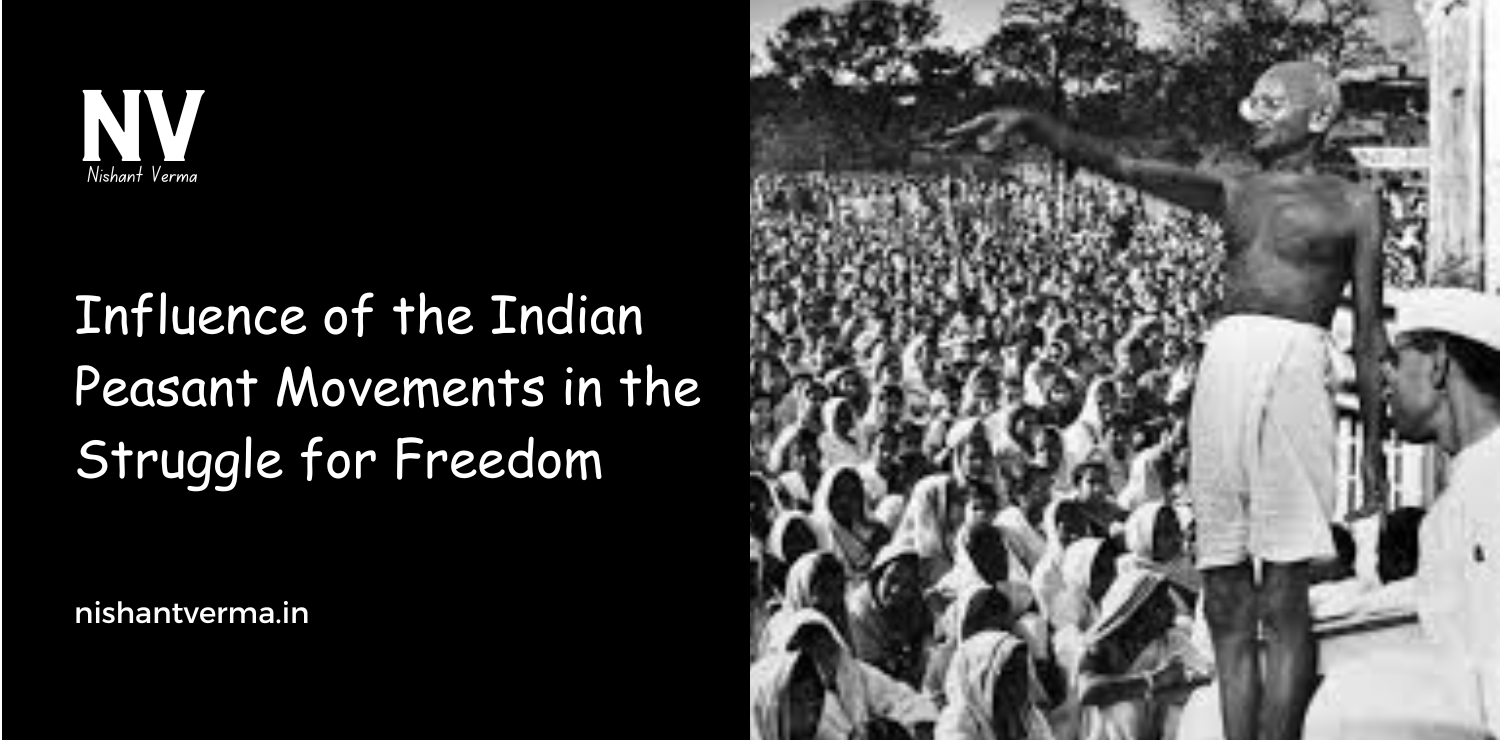India’s struggle for independence was long and difficult. The country had been under British rule for over 200 years, and many people were unhappy with how the British treated them. Over time, more and more Indians began to realize that the only way to get rid of the British was to fight for freedom. One of the most powerful and peaceful ways they did this was through the Civil Disobedience Movement. This movement became one of the most important events in India’s fight for independence, and it had a big impact on how Indians challenged British authority.
What Was the Civil Disobedience Movement?
The Civil Disobedience Movement was a peaceful protest against British rule, led by Mahatma Gandhi. The word “disobedience” means not following orders or rules. But in this case, it wasn’t about being violent or fighting; it was about refusing to follow the laws that the British government made. The movement was a way of showing that the Indian people would no longer accept British control and would not obey laws that were unfair.
The movement started in 1930 with the famous Salt March, led by Gandhi. But it was not just about salt. It was about standing up to British authority and saying that India deserved to rule itself.
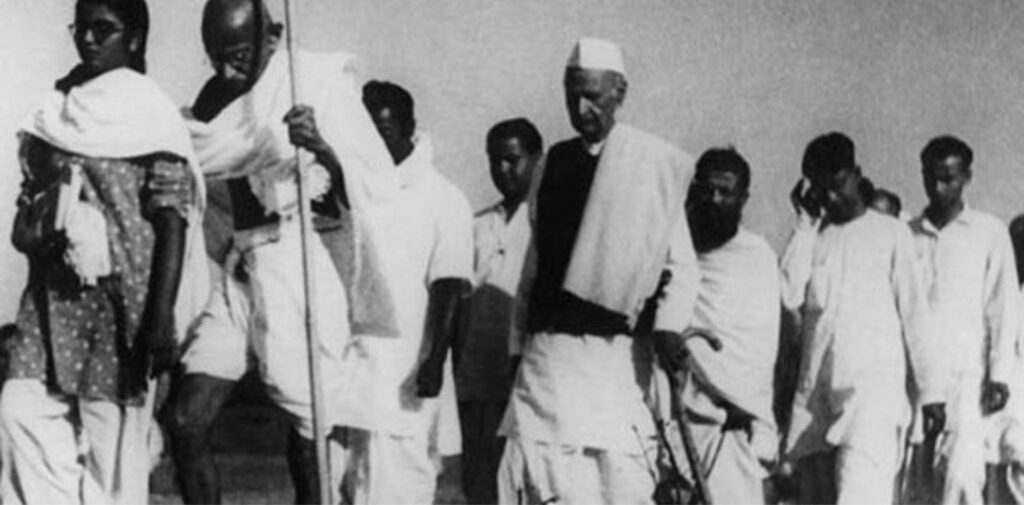
Why Did the Civil Disobedience Movement Start?
For many years, the British had been taking advantage of India’s resources and people. They controlled the government, the economy, and even the daily lives of the people. The Indians were unhappy with how they were treated, and they wanted change. Many reasons led to the start of the Civil Disobedience Movement:
- Unfair British Laws: The British made many laws that hurt the Indian people. One of the most well-known unfair laws was the Salt Tax. The British made Indians pay for something as basic as salt, which was an important part of their daily life. This made many people angry and frustrated.
- Desire for Freedom: The Indian National Congress, led by leaders like Jawaharlal Nehru and Subhas Chandra Bose, wanted India to be free from British rule. They were looking for a way to get the British to leave the country and give India its freedom.
- Mahatma Gandhi’s Leadership: Gandhi believed that the British could be defeated without violence. He promoted the idea of Satyagraha, which means “truth force” or “non-violent resistance.” Gandhi believed that Indians could challenge the British in peaceful ways, like refusing to follow unfair laws.
The Salt March and Its Impact
The most famous moment in the Civil Disobedience Movement was the Salt March in 1930. Gandhi led a group of followers on a 240-mile journey to the coastal town of Dandi, where they made their salt from the sea. This was a direct act of defiance against the British Salt Tax. The British had made it illegal for Indians to make their salt, forcing them to buy it from the government at a high price.
Gandhi’s Salt March became a symbol of resistance. It showed the British that Indians were willing to break the laws peacefully to demand their rights. The Salt March also got the attention of people all over the world, who saw the courage of the Indian people and their desire for freedom.
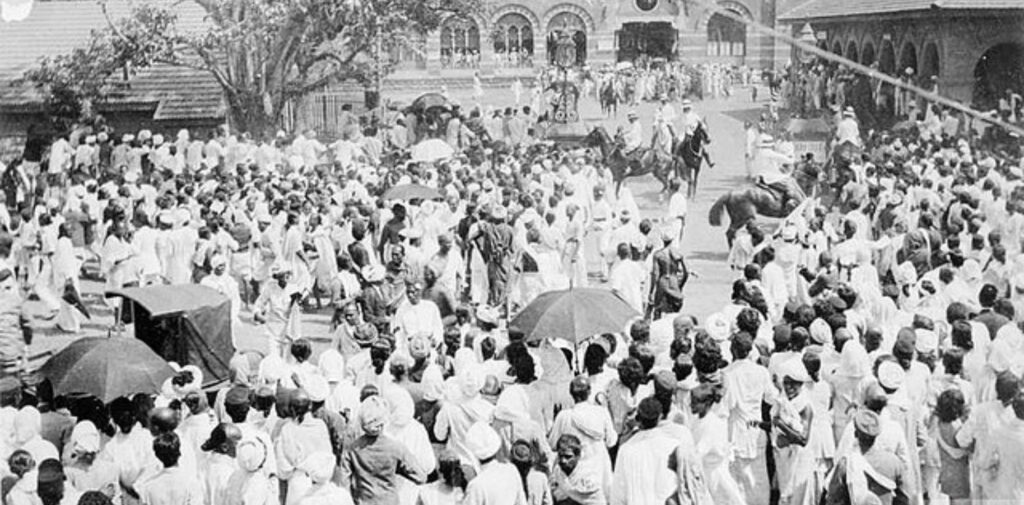
How Did the Civil Disobedience Movement Challenge British Authority?
The Civil Disobedience Movement was a big challenge to British authority because it was not just about one group of people protesting—it was a nationwide movement that included people from all walks of life. Here are a few ways in which the movement challenged the British:
- Mass Participation: One of the biggest strengths of the Civil Disobedience Movement was that people from all parts of India, including men, women, and children, participated. The movement was not limited to the wealthy or the powerful; it was a movement that involved the common people. This made it difficult for the British to control.
- Non-Violent Resistance: Gandhi’s idea of non-violence or Ahimsa was key to the Civil Disobedience Movement. The people who participated in the movement followed the principle of non-violence, even if they were arrested or mistreated by the British. This peaceful method made it harder for the British to justify violence against the protestors and helped to gain sympathy from the world.
- Defying British Laws: The most important part of the Civil Disobedience Movement was that Indians refused to follow the British laws that they felt were unfair. They made their salt, boycotted British goods, and refused to pay taxes. This hurt the British economy and made it clear that the Indian people were no longer willing to follow rules imposed on them by a foreign government.
- Mass Arrests: When Gandhi and other leaders were arrested, it made the movement even stronger. More and more people joined the protests to demand the release of their leaders. The British responded by arresting thousands of people, including many women, but this only made the movement more popular and united the people of India even more.
Spread of the Movement Across India
The Civil Disobedience Movement spread to many parts of India, from the towns to the villages. It became a mass movement, meaning that large numbers of people were involved in the protests. The movement had different parts:
- Boycotting British Goods: One of the most important ways people resisted British rule was by refusing to buy British goods. They made their clothes and goods, which was part of the Swadeshi Movement. Gandhi encouraged people to wear khadi (hand-spun cloth) instead of British-made clothes. This was an important step in making the British feel that they were losing control over the Indian economy.
- Non-Cooperation with British Officials: Many people stopped working for the British government or helping the British in any way. Teachers left their jobs in British schools, lawyers boycotted British courts, and workers stopped working in British factories. This hurt the British administration and showed that the Indian people were no longer willing to cooperate with their rulers.
- Participation of Women: One of the unique features of the Civil Disobedience Movement was the strong participation of women. Women played an important role in the protests, with many of them marching with Gandhi or leading protests in their communities. This was a big change, as women were usually expected to stay at home, but they became active fighters for freedom during this movement.
The British Reaction
The British were not pleased with the Civil Disobedience Movement. They tried to stop it in several ways:
- Arrests and Brutality: The British arrested many leaders, including Gandhi, and treated them badly. In many cases, the police used violence to stop the protests. However, the peaceful nature of the protests and the British brutality made the Indian people even more determined to fight for their rights.
- Press Censorship: The British also tried to stop the spread of news about the movement by controlling the press. They banned newspapers that supported the protests, but this didn’t stop the movement from growing. Word spread quickly, and more people joined the struggle.
- Failing to Understand the Indian Spirit: The British misunderstood the strength and determination of the Indian people. Despite the arrests and repression, the movement continued to grow. The British never realized how powerful the desire for freedom was among the Indian masses.
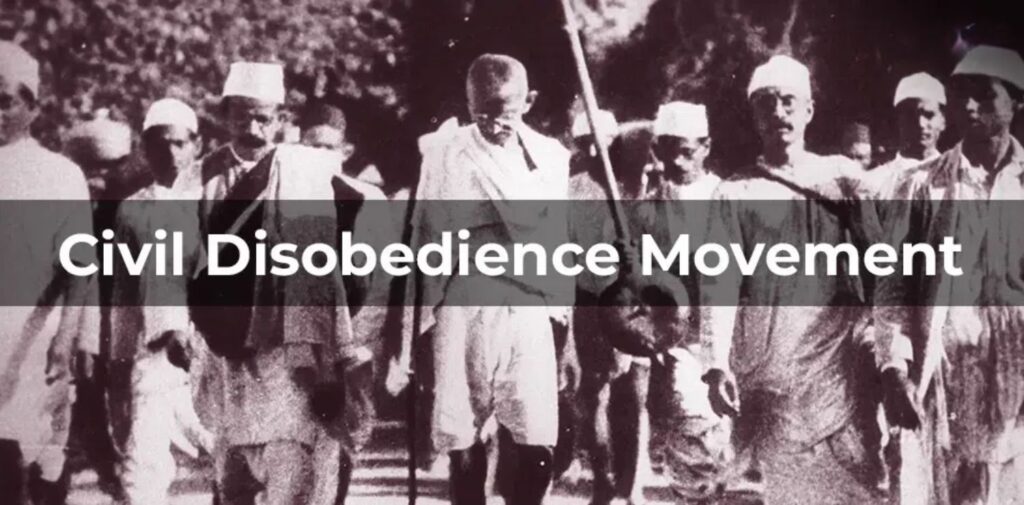
The Impact of the Civil Disobedience Movement
The Civil Disobedience Movement had a huge impact on India’s fight for independence:
- Increased Unity: The movement brought together people from different backgrounds, religions, and regions. It united them in the common cause of freedom and justice. This unity was crucial for the success of India’s independence movement.
- International Attention: The Civil Disobedience Movement attracted worldwide attention. The peaceful protests, led by Gandhi, inspired people around the world who were fighting for freedom and justice. The British were seen as the oppressors and India’s struggle for independence gained global support.
- Pressured the British: The movement created a lot of problems for the British. The British economy was affected by the boycott of British goods, and the administration became weaker as more people joined the protests. The British realized that they could not keep India under their control forever.
- Path to Independence: Although the Civil Disobedience Movement did not directly lead to India’s independence in 1947, it was an important step in the process. It showed the world that India was united in its struggle for freedom and that the Indian people would not rest until they achieved independence.
Conclusion
The Civil Disobedience Movement was one of the most important chapters in India’s fight for independence. Led by Mahatma Gandhi, it showed the power of peaceful protest and non-violent resistance. The movement helped challenge British authority by encouraging people to refuse to obey unfair laws and by uniting Indians across the country. While the British tried to suppress the movement through arrests and violence, the Indian people’s courage and determination only grew stronger.
The Salt March, the boycotts, the mass participation, and the involvement of women were just a few of the ways that this movement made a powerful statement to the British. Though India didn’t gain independence immediately, the Civil Disobedience Movement brought the country closer to freedom and inspired millions of Indians to continue the struggle until the British left India in 1947.
The Civil Disobedience Movement is remembered today as a key moment in the story of India’s freedom, showing that even against powerful rulers, a united and peaceful nation can make a difference.

